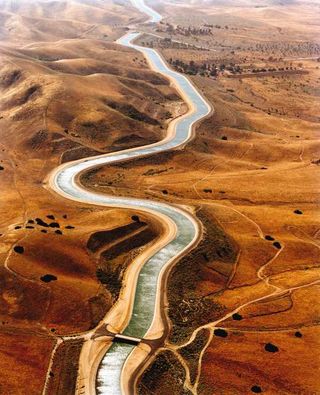The Dry Garden: “If you want to save energy, save water”
Posted on | August 28, 2009 | 4 Comments
 WEEK before last, more than 1,000 climate experts from around the world gathered in Stockholm for World Water Week. If you didn’t read about it or hear about it on TV, it’s not necessarily because of the crisis besetting modern journalism. It could easily be the subject. If there is anything that can clear a room faster than a plague of toads, it’s discussion of climate change and water.
WEEK before last, more than 1,000 climate experts from around the world gathered in Stockholm for World Water Week. If you didn’t read about it or hear about it on TV, it’s not necessarily because of the crisis besetting modern journalism. It could easily be the subject. If there is anything that can clear a room faster than a plague of toads, it’s discussion of climate change and water.
Peter Gleick, a MacArthur fellow and president of the Pacific Institute in Oakland, was in Stockholm for the meeting. He is, above any Californian, our man on the unmentionable.
So are there ways to address this topic, I asked Gleick recently, without leaving everyone feeling utterably depressed and helpless? Absolutely, Gleick responded. “If you want to save energy, save water.”
To keep reading Emily Green’s latest Dry Garden column in the Los Angeles Times, click here.
Correction: In an early version of the article, I stated that “the pumps that convey and treat California’s water account for roughly 20% of the energy consumed in the state.” This was incorrect. It accounts for 20% of the electricity, along with 30% of California’s natural gas and 88 billion gallons of diesel fuel every year. — EG
Comments
4 Responses to “The Dry Garden: “If you want to save energy, save water””
Leave a Reply



August 30th, 2009 @ 11:22 am
I’ve gotten the 20% number from DWR in the past. So that 30% nat gas number is beyond the natural gas used to generate electricity? (Nat gas itself being the largest chunk of the state’s electric power.) Is it generators? Nat gas pumped straight into treatment plants?
August 30th, 2009 @ 1:59 pm
There are many different gas-related water consumers, starting with most domestic home water heaters.
Three sources for you with breakdowns:
http://www.energy.ca.gov/2005_energypolicy/index.html
http://www.pacinst.org/reports/energy_and_water/energy_down_the_drain.pdf
http://www.energy.ca.gov/2005publications/CEC-700-2005-011/CEC-700-2005-011-SF.PDF
September 9th, 2009 @ 12:24 pm
Via e-mail from Gary Underhill:
Water costs of $1 to $3 a day for potable water, delivered to our taps from
afar, are so low that there is very little motivation for home gardeners to
conserve.
As we experienced for a short while with gasoline prices, economic
incentives rather than the Draconian measures suggested in the LA Times
today, could help solve our water demand problems.
Differential revenues, from higher unit costs, should be used to support
helpful water district conservation measures without changing the total
monthly bills of complying consumers.
September 11th, 2009 @ 8:53 am
To second the email from Mr. Underhill, as a culture we tend to valuate things by the cost.
Although we could probably all conserve more then we do, a tiered structure of water rates based upon the amount used could help ease the pressure on the already overwhelmed water infrastructure and get some of us more into reality regarding the value of water.
And as Gsry noted, “without changing the total monthly bills of complying consumers”.